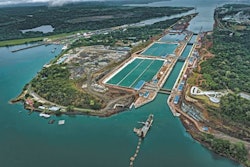
As the holiday season approaches, supply chain teams should be well on their way to gearing up for the big business holiday season test. They should be proactively assessing the risks involved in reliably meeting this year’s market demand and aiming to continue strong growth trends from the past several holiday seasons.
Much of this business growth can literally be ascribed to the contribution of the end-to-end supply chain—launching and delivering new products, running global operations, growing margins, and managing contract manufacturers and suppliers. Supply chain’s role is so important that leading companies now quantitatively measure and reward its contributions to business growth.
The flip side of the growth equation is risk management. Leadership teams evaluating business growth and opportunities carefully assess their risks to avoid the supply and availability issues supply chains typically encountered in the past.
Strategically, maintaining growth to meet demand, while minimizing risk is a delicate balance that requires alignment of the entire business leadership team, and increasingly, the digital technology team.
Keeping It All Together; Start with Demand Visibility
The hardcore reality is that forecasted demand drives the actions of the business. But with market volatility, it is difficult and risky to accurately forecast demand.
Many industry leaders are coming to the conclusion that achieving 100 percent demand forecast is expensive and simply not a reality. However, being able to quickly sense and accurately respond to demand changes when a business gets it wrong is an imperative business capability. What happens over the holidays if demand far outstrips supply and products stock out? Or what if demand falls short and products get sold after the season at a loss?
The key, critical factors in the decision-making processes that shape market demand could be as simple as choosing colors, styles, sizes, models and demographics. Or, they can be as complex as selecting supply of inventory with long lead times, such as holiday fashion goods assembled overseas, or toys consolidated and assembled from parts made around the world that will need to be delivered directly and on time.
More organizations are tapping into analytics and insights from social media to provide proactive insights into what people want and will buy. All of these elements have a profound impact on supply chain performance, and make it difficult to manage the many variables, trade-offs and supply chain complexities that organizations often face. The chief supply chain officer role even emerged to ensure seamless operations.
It’s these decisions and demand forecasts that will ultimately determine whether or not the business’ first moment of truths will be met. This first moment of truth—which Procter & Gamble described as the first three to seven seconds after a shopper first encounters a product—is the heart and soul of end-to-end supply chain capabilities, namely that the product will be available when and where it’s supposed to be available.
Supply Chain Capabilities Are Evolving
Studies and research show that the retail and supplier industry is learning and getting better every year. It took 10 years to operate in a truly demand-driven way and many companies are still battling to make that fundamental operating model transition.
But each holiday season, we see new examples of innovations driving supply chain performance.
New digital capabilities give rise to new business models and consumer insights, driving new ways of operating as an integrated, end-to-end, agile business, designed to start with the buyer, then track back to supply. Managing operations based on customer behavior, expectations and demand is the dream of demand-driven, and is the emerging vision for holiday season agility.
A few key thoughts and pointers as to what is significantly different and changing:
- Outside-in. The business mindset is progressing from supply chain efficiency with a focus on costs (inside-out) to a business model that starts with buyer demand, moves through integrated planning processes and translates back into reliable supply. This positions industry leaders to begin treating supply chain as a strategic growth element of the business, and not just as a cost-cutting function.
- Segmentation. Different segments govern demand, and it’s the goal of outside-in, demand-driven businesses led by strategic supply chain transformation teams to analyze the different segment characteristics and match the appropriate business channels to those segments. For example, a predictable demand segment with tight retail relationships (e.g., mature seasonal products) requires a fast and lean supply chain, while a segment launching an innovative, but untested product with unpredictable demand needs an agile, flexible and responsive supply chain. Different segments require different supply chain designs.
- New digital technologies. The emergence of cloud-based control tower capabilities and software applications provide unprecedented upstream and downstream visibility, and integration across global business units and systems. They provide visibility into the sales, logistics, planning and manufacturing processes necessary to make balanced end-to-end business trade-offs to win in the market (e.g., availability versus profitability).
- Analytics. Analytic capabilities are progressing from after-the-fact transactional reporting and dashboards to predictive and cognitive analytics being fed insights from floods of social media. These predictive and cognitive analytics are increasingly used to gain insights into the voice of the customer and to analyze possible scenarios over the holiday season, which is foundational to collaborative planning processes between retailers and suppliers to ensure dynamic business agility.
- Product lifecycle management (PLM). Innovation management processes are now increasingly integrated with PLM into the end-to-end supply chain and operating model of the business. This integration is driving the fast and efficient translation of innovation into customer-facing processes.
- Performance metrics in the end-to-end model. Performance management struggles with siloed data and metrics that lead to poor business decisions and trade-offs, but now, businesses are refocusing on performance metrics in horizontal end-to-end business and customer service levels, moving away from sub-optimized silos to combat the issue. It’s critical that businesses properly understand cause and effect within different segments, and they can do this by refining performance metrics end-to-end as they evaluate the business.
This is an exciting time for the end-to-end, demand-driven supply chain, as it is now recognized as the potential business growth engine and foundation to the business operating model. These new supply chain capabilities will once again be battle tested this holiday season, when success or failure leaves indelible marks on a business—and when errors don’t go unpunished!
If I could leave you with a few pieces of practical advice:
- Understand your outside-in demand segments.
- Ensure you mapped and aligned each segment to the relevant speed you need to do business.
- Ensure upstream (supplier) and downstream (demand) visibility.
- Run the business as an end-to-end operating model, not just as a supply chain.
Good luck for the holiday season; may we all look back next year and see another exciting year of growth from the supply chain!















